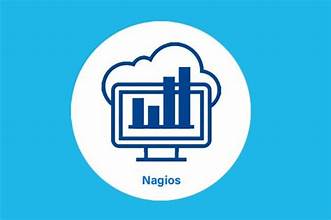Introduction
- The need for distributed systems logging
- The inadequacy of conventional logging solutions
Setting up Fluentd
Overview of Fluentd Features and Architecture
Configuration File Syntax
Overview of Event Workflow
Working with Fluentd Plugins
Overview of Fluentd Use Cases
Searching Data
Analyzing Data
Collecting Data
Archiving Data
Deploying Fluentd to Production
Logging and Monitoring
Managing Performance
Managing Plugins
Configuring Fluentd for High Availability
Troubleshooting
Summary and Conclusion
Duration
21 hours (usually 3 days including breaks)
Requirements
- Participants should be comfortable with basic system administration tasks using linux command line. Some topics require programming or scripting skills. When booking, please list the programming languages that you are familiar with. If there are none, we’ll just issue redis commands from redis-cli.
Overview
Redis is an open source (BSD licensed), in-memory data structure store, used as database, cache and message broker.
Course Outline
Module 1: Initial setup
- Redis Releases
- Installation
- Configuration
- Security model
- Starting Redis during boot
- Security hardening applied by common Linux distributions
- Client libraries and language bindings
Module 2: Data model
- Primitive data types and commands to manipulate them
- Typical use cases for each data type
- Common naming conventions for Redis keys
- “Redis is mostly single-threaded” – what it means in practice
- Redis wire protocol
- What to do if your client library does not know about some useful command
- Why some commands are deliberately unavailable in some client libraries
- How to adjust your mindset from the one of a relational database designer
- General tips on data organization
- Expiration
- Pub/Sub
- Transactions & Lua scripts
- External modules
- General tips on data consistency
Module 3: Performance tips
- Benchmarking Redis
- Commands to avoid
- Debugging latency problems
- Problems with big DEL requests – what to use instead
- Pipelining
- Mass insertion
- Debugging memory overuse
- Memory optimization tips
Module 4: Operations
- Available persistence mechanisms
- Precautions to avoid SSD wearout
- Backup and restore
- Tools for exploring database contents
- Tools for dump analysis
- Tuning durability vs performance
- Switching between RDB and AOF
- Use cases for diskless Redis
- OS-level tunables relevant for Redis
- Monitoring Redis performance
Module 5: More than one Redis
- Starting multiple instances of Redis on one server
- Application-level partitioning
- Master-slave replication
- High availability using Redis Sentinel
- Redis Cluster
- Making Sentinel and Cluster work across NAT
- Making consistent backups
Module 6: High Availability
- Install and Setup multi-Redis servers
- Standalone server with multiple instances
- Master/slave replication
- Redis HA cluster with Sentinel
- Redis sharding cluster
- Combination of Redis replication (with Sentinel) + Sharding capability
- Monitoring, backup/restore and performance tuning for the setup
Duration
28 hours (usually 4 days including breaks)
Requirements
- Experience with MySQL or MariaDB basic operations
- Experience with SQL language
- Experience with Linux command line
Audience
- Developers
- Database administrators
- System administrators
Overview
MariaDB is a fork of MySQL and one of the most popular database servers.
In this instructor-led, live training, participants will learn how to install, configure and manage MariaDB for high availability and performance. Other topics include backup and recovery, security and clustering.
Format of the course
- Part lecture, part discussion, exercises and heavy hands-on practice
Course Outline
Introduction
Installing and configuring MariaDB
Overview of MariaDB architecture
Backing up and restoring MariaDB
Point-in-Time-Recovery (PiTR)
Securing MariaDB
Configuring MariaDB for high availability
Master-slave replication
Master-master replication
Setting up virtual IPs
Read/write distribution
Active-active clustering with Galera Cluster
Load balancing
Performance tuning in MariaDB
Hardware and performance
Schema tuning
Indexing
SQL query Tuning
Profiling
Closing remarks
Duration
7 hours (usually 1 day including breaks)
Requirements
It is recommended to take this training only if you have a prior knowledge of PostgreSQL.
Overview
This training is designed for Database Administrators and Architects who want to learn Streaming Replication in PostgreSQL and how pgpool-II can be used to achieve automatic failovers and setup a highly available PostgreSQL Database Cluster.
Course Outline
- Introduction
- Streaming Replication
- Streaming Replication
- Sync or Async
- Cascaded Replication
- Transaction Log Archiving
- Base Backups
- Setup Streaming
- Monitoring Streaming
- Handling Conflicts
- High Availability Setup
- Connection Pooling and HA setup using pgpool-II
- Installation
- Configuration
- Pool Setup
- HA Setup
- Demos and Labs




